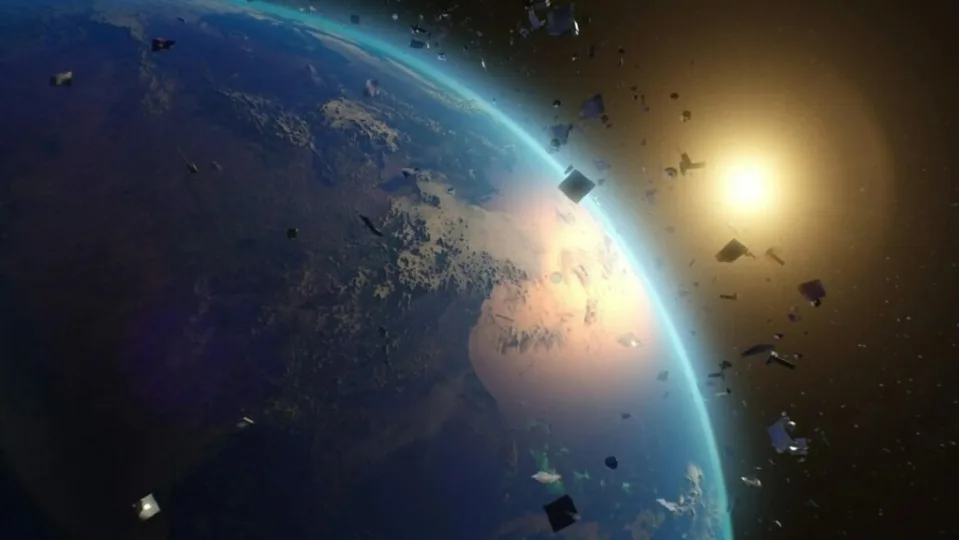We all know that with every launch into space, be it a rocket, a manned capsule, a handful of satellites or a Martian probe, the debris they generate is left spinning around in space and trapped by the planet’s gravity.
And it’s not just garbage in space. Right now there’s a lot of trash on the Moon – including nearly 100 bags of human waste – and with countries from all over the world traveling to the Moon, there’s going to be a lot more, both on the lunar surface and in Earth orbit.
In August 2023, the Russian probe Luna-25 crashed to the surface of the Moon, while the Indian mission Chandrayaan-3 successfully landed in the southern polar region, making India the fourth country to land on the Moon.
With more countries landing on the Moon, people on Earth will have to think about what happens to all the landings, debris and miscellaneous debris left on the lunar surface and in orbit. This is of concern to scientists.
Space is filling up with garbage… non-stop…
People think of space as vast and empty, but the near-Earth environment is starting to get crowded. Up to 100 lunar missions are planned for the next decade by governments and private companies such as SpaceX and Blue Origin.
Near-Earth orbit is even more congested than the space between Earth and the Moon. It is 100 to 500 miles as the crow flies, compared to 240,000 miles for the Moon.
There are currently about 7,700 satellites within a few hundred miles of Earth. That number could increase to several hundred thousand by 2027. Many of these satellites will be used to bring the Internet to developing countries or to monitor agriculture and climate on Earth.
Companies such as SpaceX have drastically reduced launch costs, driving this flurry of activity.
“It’s going to be like an interstate highway, rush hour in a snowstorm, with everyone driving too fast,” space launch expert Johnathan McDowell told Space.com.
The space debris problem
All this activity generates hazards and debris. Humans have left a lot of junk on the Moon, including spacecraft debris such as rocket boosters from more than 50 crashed lunar landings, nearly 100 bags of human debris, and miscellaneous objects such as a feather, golf balls, and boots. In total, about 200 tons of our trash.
Since no one owns the Moon, no one is responsible for keeping it clean and tidy. The clutter in Earth orbit includes decommissioned spacecraft, spent rocket boosters, and objects discarded by astronauts, such as a glove, a wrench, and a toothbrush. It also includes small pieces of junk, such as paint flecks.
There are about 23,000 objects larger than 10 cm (4 inches) and about 100 million pieces of junk larger than 1 mm (0.04 inches). Small pieces of junk might not seem like a big deal, but that debris is moving at 24,140 km/h or 10 times faster than a bullet.
At that speed, even a speck of paint can puncture a spacesuit or destroy a sensitive piece of electronics.

And no one is in charge up there
The 1967 United Nations Outer Space Treaty states that no country may “own” the Moon or any part of it and that celestial bodies should only be used for peaceful purposes. But the Treaty says nothing about companies and individuals, or how space resources can be used.
The 1979 United Nations Moon Agreement held that the Moon and its natural resources are the common heritage of mankind. However, the United States, Russia and China never signed it, and in 2016 the U.S. Congress created a law that gave free rein to the U.S. commercial space industry with very few restrictions.
Because of its lack of regulation, space debris is an example of a “tragedy of the commons,” in which many interests have access to a common resource, and it can become depleted and unusable for all, because no one interest can prevent another from over-exploiting the resource.
Scientists argue that, to avoid a tragedy of the commons, the orbital space environment should be considered a global commons worthy of protection by the United Nations.
The UN can only regulate the activities of its member states, but it has a project to help them develop national policies that promote sustainable development objectives.
NASA has created and signed the Artemis Agreements, broad but non-binding principles for peaceful cooperation in space. They have been signed by 28 countries, but the list does not include China or Russia. Private companies are also not part of the agreements.
Lack of regulation and the current gold rush in space exploration mean that space junk and debris continue to accumulate… and no one is going to fix this problem.
Some of the links added in the article are part of affiliate campaigns and may represent benefits for Softonic.


